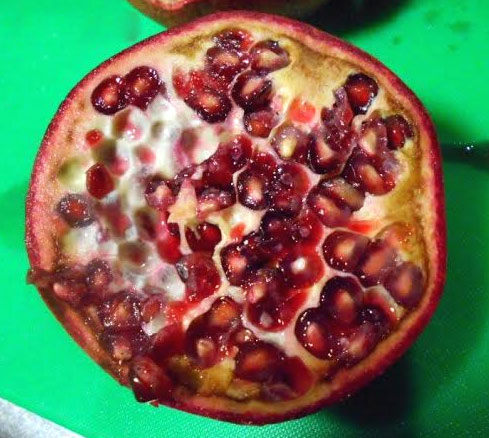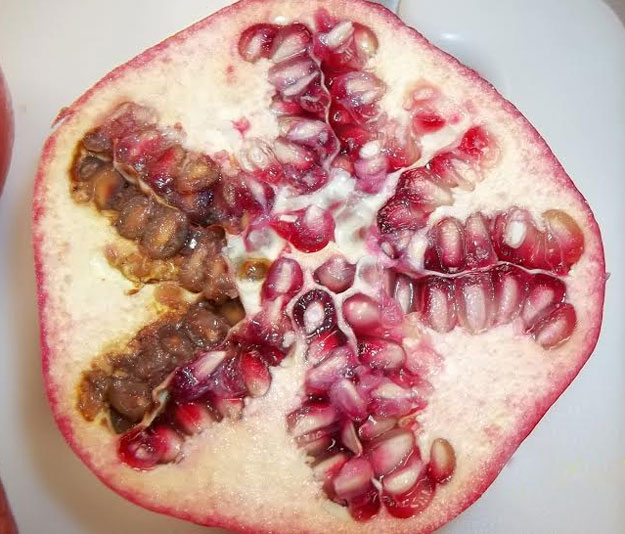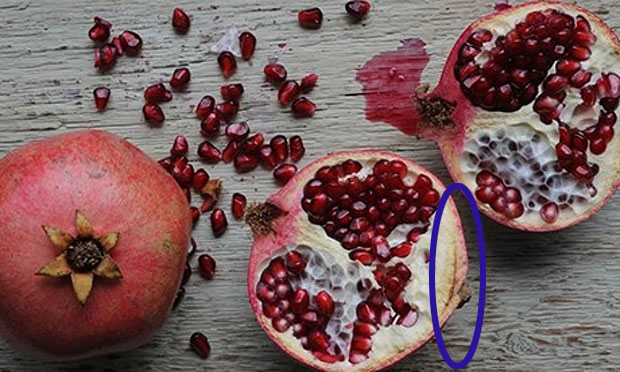Most of you likely don’t inspect many lots of pomegranates. There is no U.S. Grade Standard for pomegranates thus there is not much inspection material to reference. Externally, you may find surface discoloration ranging from a brown to black color. Also mold is frequently found affecting the blossom end. If severe, score as a defect, but most of the times the mold is slight and will dissipate when exposed to moving air.
Don’t forget to cut pomegranates to look for possible internal defects. You may notice a slight brown discoloration affecting the outer membrane, as seen circled in the image above. Since there is no U.S. Grade Standard for Pomegranates there is no official scoring guideline when defects are encountered. If you feel the internal discoloration is severe enough to materially affect the appearance of the pomegranate then score the discoloration as a defect. The discoloration shown in the image above, does not materially affect the appearance and should be ignored.

As you can see from this image (above) the discoloration affecting the outer membrane is much more noticeable, darker in color and affecting a larger area. The internal discoloration does materially affect the appearance and should be scored as a defect.

And in some cases the discoloration may actually be decayed, where the tissue is soft and mushy. Explore with you knife to eliminate all doubts if the discoloration is firm and is scored as defect, or if the discoloration is indeed breaking down and should be scored as decay. But be very careful when inspecting pomegranates as there is no external indication to help you determine which pomegranate may have internal discoloration or internal decay. You must cut enough random pomegranates to verify you are confident there is no internal problem present.
As with all products having no U.S. Grade Standards there are no official tolerances for defects found. The general rule to follow in these cases is to allow no more than 15% total defects, which include the discoloration, and no more than 3% decay. Please contact your local USDA/PACA office if you have any questions pertaining to defect tolerances of pomegranates.


2 Comments on “Pomegranates- Internal Defects”
The internal decaying of the Pomegranate is caused from a virus during the bloom and is called Blackheart such as the defect in Potatoes, brown rot like the Fuji Apples contain and is not notice from the outside by sight. If trained well or experienced enough you can tell by the external look of the fruit and the difference in weight also can an indicator sometimes. Bruising will cause decay eventually in the area damaged and closer to the skin. Sun Burn( brown to black skin discoloration) and Growth Cracks need to be considered as well. Growth cracks healed and unhealed can mold or decay when the fruit goes thru temperature changes.
I’m very pleased to find this page. I need to to thank you for your time for this particularly fantastic read!!
I definitely really liked every part of it and
i also have you book-marked to see new information in your web site.